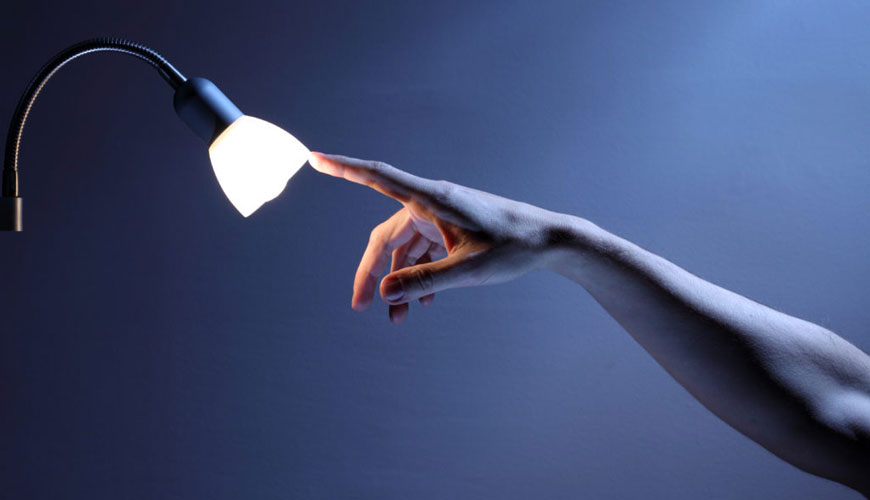

EUROLAB laboratory provides testing and compliance services within the scope of EN 62471 standard. The EN 62471 standard provides guidance for assessing the photobiological safety of lamps and lamp systems, including luminaires. Specifically, it specifies exposure limits, reference measurement technique, and classification scheme for the assessment and control of photobiological hazards from all electrically powered sources of inconsistent broadband optical radiation in the wavelength range 200 nm to 3000 nm, including LEDs but excluding lasers.

Lamps were developed and produced in large quantities and became commonplace in an era where industry-wide safety standards were not the norm. The assessment and control of optical radiation hazards from lamps and lamp systems is a much more complex issue than similar tasks for a single wavelength laser system.
The required radiometric measurements are quite complex as they deal not with the simple optics of a point source but with an extended source that may or may not be replaced by diffusers or projection optics. In addition, the wavelength distribution of the lamp can be changed by auxiliary optical elements, diffusers, lenses and the like, as well as changes in operating conditions.
To evaluate a broadband optical source such as an arc lamp, incandescent lamp, fluorescent lamp, an array of lamps or a lamp system, it is first necessary to determine the spectral distribution of the optical radiation emitted from the source. nearest human access point or points. This accessible emission spectral distribution of interest for an illumination system should be characterized by any optical element in the light path (eg, the size or projected size of the source, in the retinal hazard spectral region. Third, it may be necessary to determine the variation of irradiance and effective brightness with distance.
The performance of required measurements is normally no easy task without complex instruments. Thus, it was decided to include reference measurement techniques for lamps and lamp systems in this standard. The measurement techniques, together with the identified risk group classification scheme, will provide a common ground for both lamp manufacturers and users to identify the particular photobiological hazards of any particular lamp and/or lamp system.
Finally, there are well-known optical radiation hazards associated with some lamps and lamp systems. The purpose of this standard is to provide a standard technique for the assessment of potential radiation hazards that can be associated with various lamps and lamp systems.
Photobiological Safety
When the wavelength spectrum of lighting fixtures (those that emit white light and/or narrow band radiation) is examined, it is observed that the fixtures can radiate in the pre-violet and/or infrared region, albeit in a very small amount. The light emitted in the indicated area is known to cause damage to the eye (on the cornea/retina) and skin. LEDs used in lighting fixtures must be certified according to standards, especially that they do not photobiologically damage the eye and skin layer. According to EN 62471, the European Union's standard in this regard, products radiating between 200nm and 3000nm must be subjected to the tests within the scope of this standard.
EUROLAB, with its more than 25 years of experience, state-of-the-art accredited laboratories and expert team, helps you get precise and fast results. Do not hesitate to contact our laboratory for your testing and certification requests.
To get an appointment, to get more detailed information or to request an evaluation, you can ask us to fill in our form and reach you.